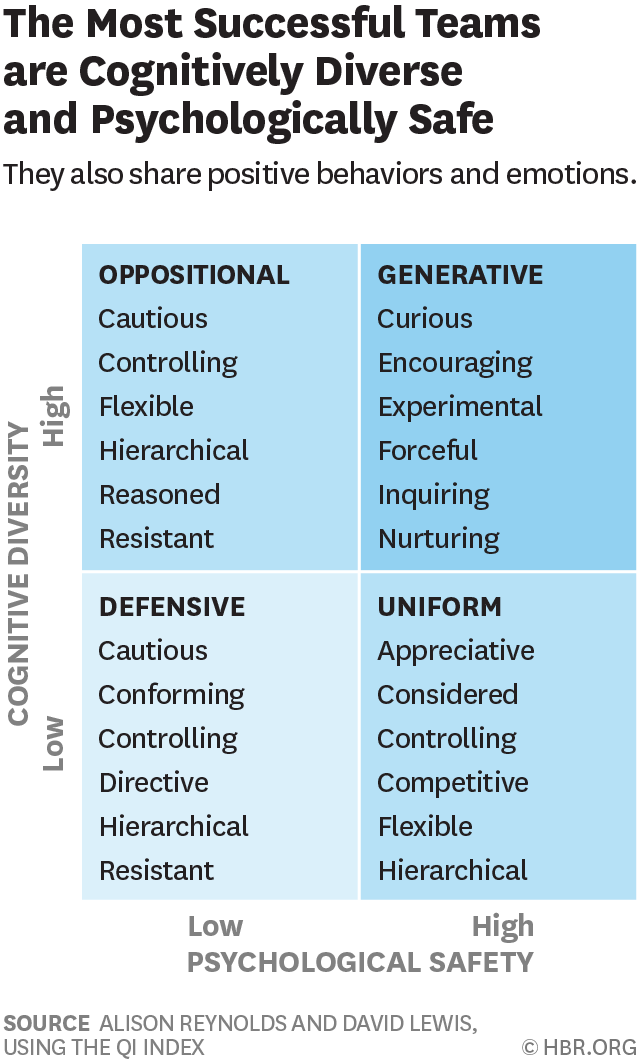Characteristics of the best problem-solving teams

In The Two Traits of the Best Problem Solving Teams (HBR)
the authors note two things:
Psychological safety is the belief that one will not be punished or humiliated for speaking up with ideas, questions, concerns, or mistakes.
and
Without behaviors that create and maintain a level of psychological safety in a group, people do not fully contribute
How then do you provide psychological safety to a group?
Surveyed 150 execs about their organizations cognitive diversity, psychological safety, and adaptability - defined as “the extent to which they consider their organization able to anticipate and respond to challenges and opportunities”
The researchers found that adaptability correlated highly with cognitive diversity and psychological safety. In the report, they labeled the organizations with high psychological safety and high cognitive diversity as “Generative” organizations. Lower performing organizations were labeled “Oppositional” (high cognitive diversity, low psychological safety), “Uniform” (low cognitive diversity, high psychological safety), or “Defensive” (low cognitive diversity, low psychological safety)
One behavior that is highlighted in the Generative quadrant is “Forceful.” While this may seem out of place is a cognitively diverse, psychologically safe workplace, in this sense it relates to “having the confidence to persist in expressing what you think is important”. This type of behavior is enabled by a psychologically safe environment.
This same forceful behavior in an Oppositional organization could be seen as aggressive due to the lack of psychological safety.
In general, you’ll see more positive, cooperative words in the quadrants where psychological safety is present, and more constrained and measured types of behavior in the quadrants absent psychological safety.
The study mentions that “hierarchical behavior” is a “top 5 dominant behavior” in non-generative quadrants 40% of the time vs only 15% of the time in the Generative quadrant and that this has nothing to do with how the organization is actually structured. This does not imply that Generative organizations have a flatter structure. Instead, they found that “hierarchical” does not manifest itself as a dominant behavior because “hierarchy does not define their interactions.”
How leaders act, and equally importantly according to the report, how leaders don’t act, lay the foundation for how your organization will communicate and interact with each other.
